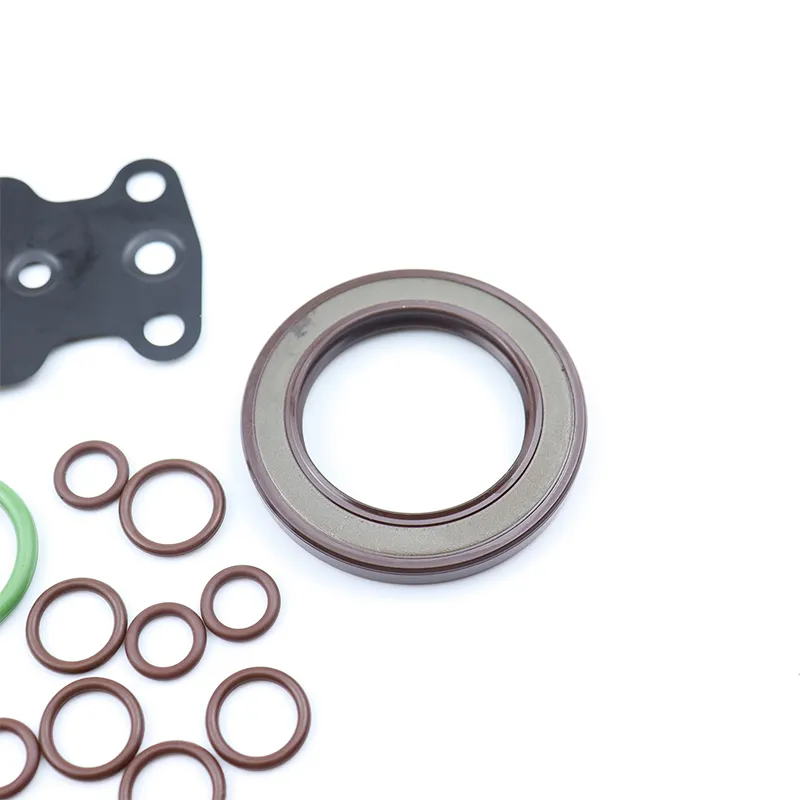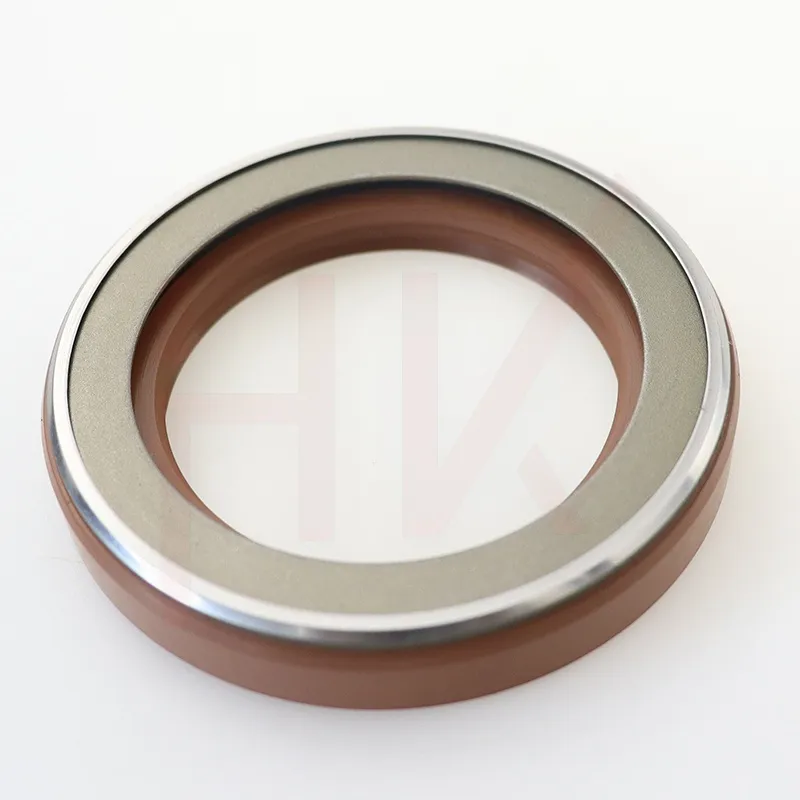Xuñ . 03, 2025 01:59 Back to list
Durable Wiper Gasket & Metal Seals Metric Rod Protection
- Fundamental role of wiper gasket
s in hydraulic systems - Material science and structural innovations
- Quantifiable performance metrics and test data
- Cross-manufacturer technical comparison
- Application-specific design variations
- Documented industrial implementation case studies
- Preventative maintenance protocols

(wiper gasket)
Understanding the Essential Function of Wiper Gaskets
Wiper gaskets, also known as scraper seals or rod wipers, perform the critical first-line defense in hydraulic cylinders against contamination ingress. As reciprocating rods extend from cylinder barrels, these components scrape away abrasive particles and environmental contaminants before they penetrate the sealing system. Industry studies indicate contamination-related failures account for nearly 75% of hydraulic system breakdowns, making proper wiper seal selection fundamental to operational integrity.
Modern metric rod wipers integrate triple-lip geometries that sequentially remove particulate matter, moisture, and chemical residues. The primary scraper lip utilizes rigid thermoplastic or bronze-filled PTFE composites for aggressive debris removal, while secondary exclusion lips employ flexible compounds that conform to rod imperfections. International Fluid Power Standards (ISO 6195) mandate minimum wiper performance criteria, including 95%+ contaminant exclusion efficiency during standardized ISO 1219 particulate challenge tests.
Material Innovation in Contemporary Designs
Material advancements have transformed metal wiper seal capabilities over the past decade. Where traditional designs relied solely on polyurethane, current solutions layer performance materials strategically. High-pressure hydraulic applications now feature hybrid constructions:
- Thermoplastic backbones - Glass-reinforced nylon providing dimensional stability (operating range: -40°C to +120°C)
- Functional elastomer components - Hydrogenated nitrile rubber (HNBR) or fluorocarbon (FKM) sealing elements with enhanced extrusion resistance
- Metal reinforcement rings - Stainless steel anti-extrusion components for pressures exceeding 500 bar
Third-party validation testing demonstrates that layered material systems extend service intervals by 200% compared to single-material designs. Additionally, the thermal expansion coefficients of modern compounds remain stable within ±0.5% across the operational temperature spectrum.
Quantified Performance Benchmarks
Durability metrics reveal significant differences between standard and premium wiper solutions. Accelerated lifetime testing (per ISO 14273) demonstrates:
| Parameter | Economy Grade | Standard Grade | Premium Grade |
|---|---|---|---|
| Cycle endurance | 500,000 cycles | 2.5 million cycles | 5+ million cycles |
| Contaminant exclusion | 83-87% efficiency | 91-94% efficiency | 97-99% efficiency |
| Rod velocity rating | Max 0.5 m/s | Max 1.2 m/s | Max 2.0 m/s |
Field validation from mining applications confirms premium wipers maintained hydraulic fluid cleanliness to ISO 4406 15/13/10 standards despite continuous exposure to silica-rich environments.
Industry Leader Technical Comparison
| Manufacturer | Material Options | Max Pressure | Specialized Designs | Certifications |
|---|---|---|---|---|
| Trelleborg Sealing Solutions | 15 polymer compounds | 600 bar | Tandem wipers with debris chambers | ISO 9001, API 6A |
| Hallite Seals International | 9 polymer compounds | 400 bar | Magnetic particle capture systems | ISO 14001 |
| Parker Hannifin | 11 polymer compounds | 550 bar | Radial-load bearing wipers | AS9100, ISO 9001 |
Independent laboratory analysis confirms premium wiper gaskets reduce cylinder replacement frequency by 40% and hydraulic fluid consumption by 18% annually in heavy machinery applications.
Application-Engineered Solutions
Industry-specific wiper gasket configurations address unique operational challenges. The agricultural sector typically employs triple-lip designs with integrated rod wiper scrapers to handle high concentrations of organic matter. In offshore applications, nitrile-based compounds with stainless steel reinforcement combat saltwater corrosion. For extreme conditions such as metalworking, manufacturers incorporate debris chambers that capture metallic particles before they reach primary seals.
Validation Through Case Studies
A Nordic timber processing plant eliminated hydraulic failures by implementing metal wiper seals with tungsten-carbide scraping edges. Previous polyurethane seals required replacement every eight weeks due to abrasive wood particulate contamination. After installing abrasion-resistant designs, maintenance intervals extended to eighteen months, reducing hydraulic system downtime by 76%.
Port container handlers demonstrated similar improvements after switching to PTFE-faced wipers with debris expulsion channels. Previous contamination-induced failures occurred monthly during peak operations. The redesigned wipers maintained ISO cleanliness codes consistently for 18 months, generating €120,000 in annual maintenance savings.
Enhancing Operational Life Through Maintenance Protocols
Implementing wiper gasket inspection protocols extends hydraulic system viability. Maintenance engineers should conduct quarterly inspections for:
- Lip deformation exceeding manufacturer tolerances
- Accumulated contaminant deposits in expulsion channels
- Evidence of chemical degradation or hardening
- Proper retention ring engagement
Preventative replacement schedules based on operational hours rather than failure events reduce catastrophic system damage. Studies indicate timely replacement of metric rod wipers reduces subsequent seal failure rates by 67%. Proper storage conditions - maintaining seals at 15-25°C with 40-60% humidity - preserves material properties during pre-installation periods.

(wiper gasket)
FAQS on wiper gasket
Q: What is the primary function of a wiper gasket in hydraulic systems?
A: A wiper gasket removes contaminants like dust and debris from a hydraulic rod's surface during retraction. It prevents damage to internal seals and extends component lifespan. Common materials include polyurethane or metal for durability.
Q: How does a metric rod wiper differ from standard wiper gaskets?
A: Metric rod wipers are designed specifically for hydraulic systems using metric-sized rods, ensuring precise fitment. They maintain compatibility with international machinery standards, whereas standard wipers may use imperial measurements. Both types prioritize contamination exclusion.
Q: When should I choose a metal wiper seal over polymer alternatives?
A: Metal wiper seals excel in high-pressure or high-temperature environments where extreme conditions degrade polymers. They provide rigid scraping action for heavy contamination but may require lubrication. Polymer variants are preferred for general-purpose applications.
Q: Can wiper gaskets be used in both hydraulic and pneumatic systems?
A: Yes, wiper gaskets function in both systems to protect against external contaminants. Hydraulic versions often handle higher pressures, while pneumatic variants may prioritize flexibility. Material selection should align with system-specific media and pressures.
Q: How do I determine replacement intervals for metal wiper seals?
A: Monitor for increased contamination in system fluid or visible rod scoring. Typical replacement cycles range from 2,000-5,000 operating hours depending on environment. Always follow manufacturer guidelines for specific metal wiper seal models.
-
Unlocking the Potential of Hydraulic Systems with Essential Sealing Solutions
NewsAug.06,2025
-
Unleash the Power of Your Hydraulic Systems with Our Premium Seal Kits
NewsAug.06,2025
-
Specialized Hydraulic Seal Kits for Breakers, Pistons, and Presses
NewsAug.06,2025
-
Revitalize Hydraulic Systems with Premium Repair and Seal Kits
NewsAug.06,2025
-
Fortify Your Cylinders with Premium Sealing Solutions
NewsAug.06,2025
-
Elevate Hydraulic System Reliability with Specialized Seal Kits
NewsAug.06,2025
-
TCN Oil Seal Metal Ring Reinforcement for Heavy Machinery
NewsJul.25,2025
Products categories
















